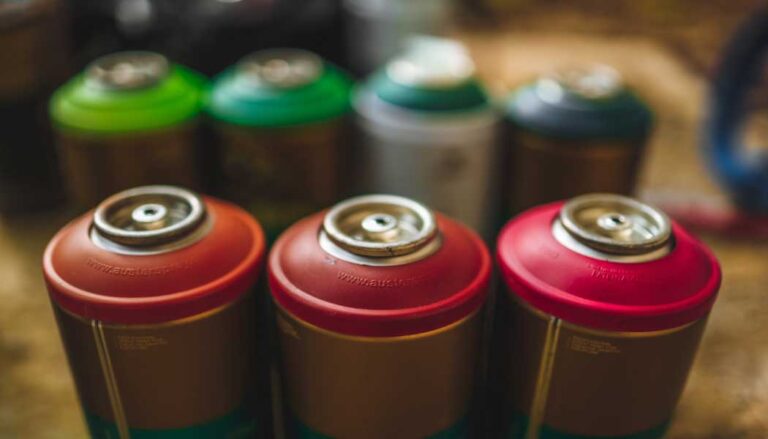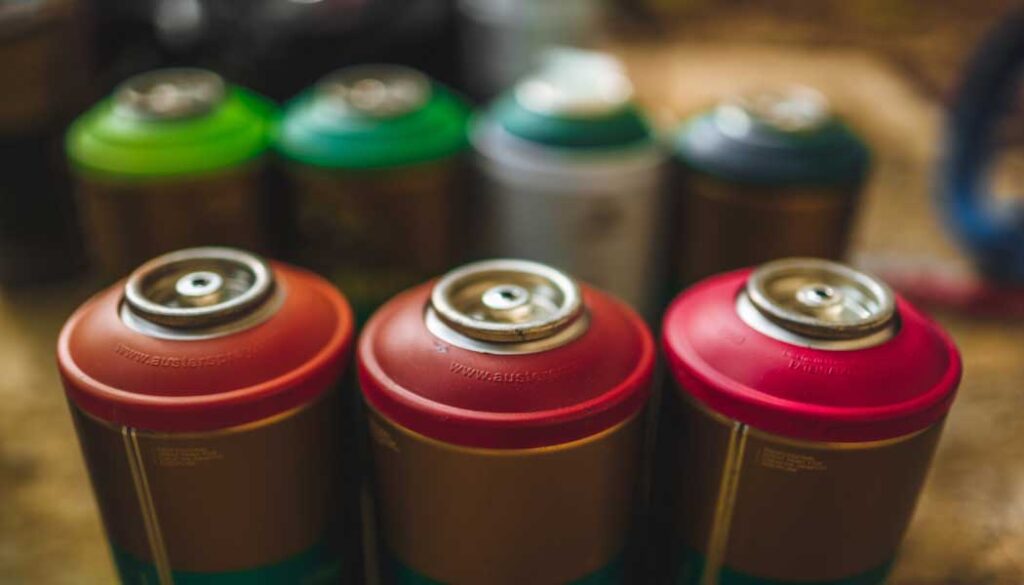
Why Is There a Ball in a Spray Paint Can?
In a spray paint can, the ball agitates and mixes the paint to ensure an even and consistent application.
When you pick up a spray paint can, you might not give much thought to what’s inside. Spray paint makes it so easy to transform surfaces or create art.

However, have you ever wondered why there’s a ball inside a spray paint can? What purpose does it serve, and why do some spray paint cans contain multiple balls? In this blog, we’ll take a deep look inside the spray paint can and find out the answers.
Why Is There a Ball in a Spray Paint Can?
The presence of a ball inside a spray paint may seem peculiar, but it plays a crucial role in ensuring the effectiveness of the spray mechanism. It serves various purposes such as:
Mixing the Contents: If we look at spray paint, we will see that it is a suspension of pigment particles in a liquid medium. Over time, these components can settle or separate. When the can is shaken, the ball helps break up clumps of pigment and ensures an even distribution of the paint’s components.
Preventing Clogging: If the ball doesn’t agitate, the pigment particles and other solids might settle at the bottom of the can and lead to clogs and uneven spraying. This could result in splatters or an inconsistent finish.
Improving Paint Quality: Proper mixing also ensures that the pigments remain suspended in the liquid medium. This helps achieve a smooth and uniform coat of paint on the intended surface.
In a nutshell, this small ball serves as an agitator. Its primary purpose is to thoroughly mix the paint or other contents within the can before they are expelled as a fine mist.
Why Do Some Spray Paint Cans Have Multiple Balls?
You may have noticed that not all spray paint cans contain just one ball. Some have two or even more. The reason for multiple balls is directly related to the size and volume of the can, as well as the nature of the paint or coating inside. Let’s take a look at some reasons to find out the answer:
Larger Cans: Larger spray paint cans contain more paint. They often have multiple balls to ensure that the contents are thoroughly mixed. This is because a single ball might not provide adequate agitation for a larger volume of paint. Multiple balls distribute the shaking force more evenly throughout the can and ensure better mixing.
Different Formulations: Some paints or coatings may have thicker or denser formulations. This makes it necessary to have multiple agitator balls to effectively break up clumps and maintain homogeneity.
Specialized Applications: Industrial or automotive spray paint cans are known for precision and consistency. So, multiple balls are typically used to guarantee that the paint or coating is perfectly mixed before application.
Are There Different Types of Balls in Spray Paint Cans?
Yes, there are different types of balls used in spray paint cans, and the choice of the ball depends on various factors. Some types you may find are:
Steel Balls: Steel balls are the most common type found in spray paint cans. They are sturdy and durable, and do an excellent job of agitating and mixing the contents. Steel balls are ideal for most standard spray paints and coatings.
Glass Balls: Some high-end or specialty spray paint products may contain glass balls. Glass balls are less likely to corrode or react with certain chemical formulations than steel balls. They are often used in paints with corrosive or reactive ingredients.
Plastic Balls: Plastic balls are used in certain spray paint formulations, where metal balls might cause a reaction or contamination. Plastic balls are non-reactive and lightweight, making them suitable for specific paint and coating types.
Nylon Balls: Nylon balls are sometimes used for paints that require a gentler agitation, such as delicate or low-viscosity coatings. They are less likely to cause damage to the container and are resistant to corrosion.
Why Does the Ball Rattle Inside the Spray Paint Can?
As mentioned earlier, the primary role of the ball is to agitate and mix the paint or coating inside the can. When you shake the can, the ball moves around, hitting the sides and bottom of the container.
This action effectively breaks up any settled pigment particles or solids and ensures uniform consistency. Also, the rattling noise indicates that the paint components are being thoroughly mixed. If the ball doesn’t rattle, it could be a sign that the paint has separated or deteriorated, and it may not perform as expected.
What Happens If the Ball Gets Stuck or Broken?
Though the ball inside a spray paint can is designed to move freely and serve its purpose, sometimes it might get stuck or even break. If the ball gets stuck, you may not hear the familiar rattling sound when shaking the can.
This could indicate that the paint inside is no longer well-mixed. To resolve this, try tapping the bottom of the can gently against a hard surface to free the ball. If the ball inside the spray paint can breaks, it could cause clogs or uneven spraying. However, this is relatively rare.
Can I Remove the Ball from a Spray Paint Can?
Removing the ball from a spray paint can is not recommended, and it’s generally unnecessary. The ball serves a vital purpose in ensuring the paint remains well-mixed and ready for use. Attempting to remove it could result in several issues like impaired paint quality, potential damage to the can, and even safety hazards.
Without the ball, the components may not work properly. Trying to remove the ball can be challenging and may require drilling or puncturing the can. It can be dangerous and may result in leaked can or health injuries.
Tips on Safe Handling and Disposal of Spray Paint Cans
Proper handling and disposal of spray paint cans are essential for your safety and environmental protection. You can follow the tips below to ensure you use and dispose of these cans responsibly.
Use in Well-ventilated Areas: Use spray paint in a well-ventilated space or outdoors to minimize exposure to fumes and ensure adequate airflow.
Wear Protective Gear: If needed, wear appropriate personal protective equipment, such as goggles, gloves, and a mask, to protect yourself from inhaling fumes and contact with paint.
Follow Instructions: Always read and follow the manufacturer’s instructions on the spray paint can for usage, safety, and disposal guidelines.
Dispose of Empty Cans Properly: Empty or spent spray paint cans should be treated as hazardous waste and disposed of according to local regulations. Most places have recycling programs or hazardous waste disposal facilities that can handle aerosol cans. If you have partially full cans, check with your local waste disposal authority for guidance on how to dispose of them safely. Do not puncture or crush empty cans.
Store Cans Securely: Store spray paint cans in a cool, dry place away from direct sunlight, heat sources, and open flames. Make sure the caps are tightly sealed to prevent leakage.
Never Incinerate or Burn: Never attempt to burn or incinerate spray paint cans, even when empty. This can be extremely dangerous and may release harmful chemicals.
Final Words
The small ball inside a spray paint can may seem inconspicuous, but it plays a crucial role in ensuring the quality and consistency of the color you use for your projects. It’s natural to be curious about its purpose. But remember that it’s best to leave it inside the can and let it serve its intended function.
